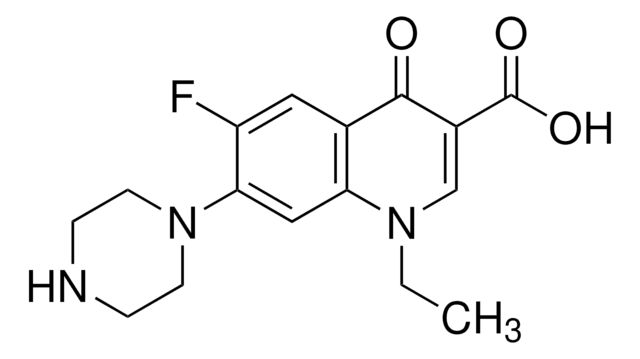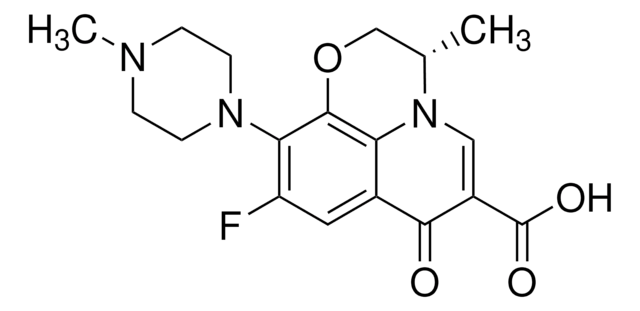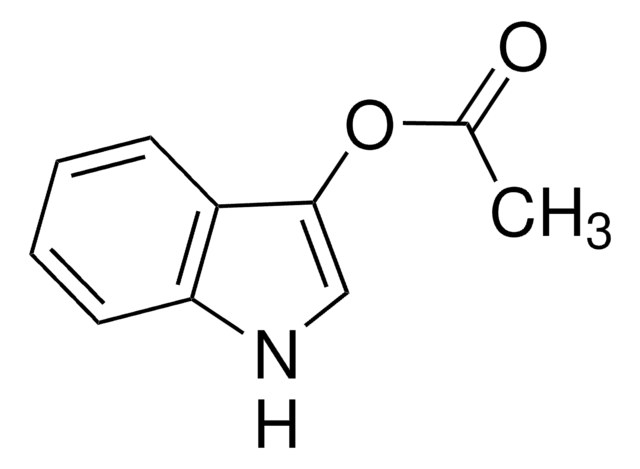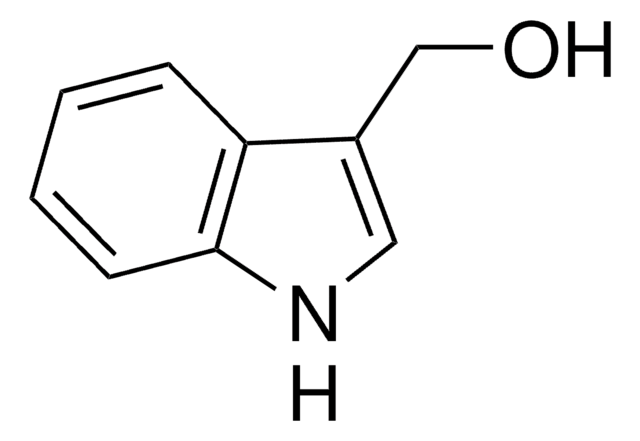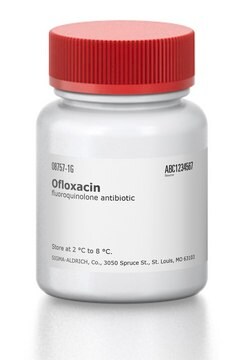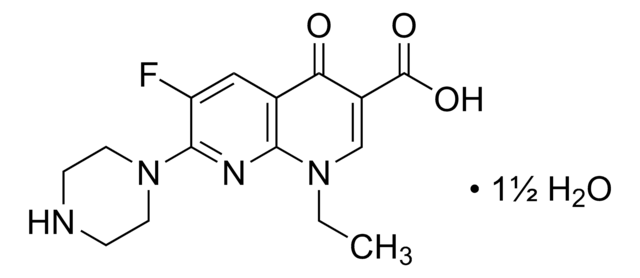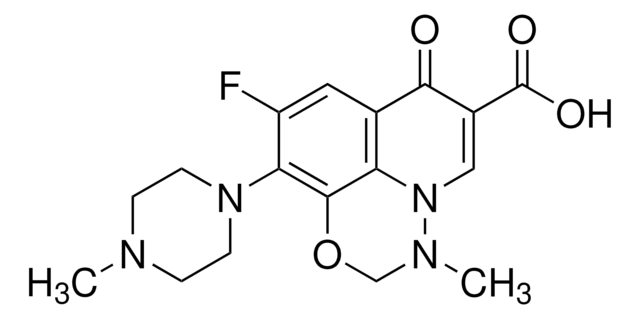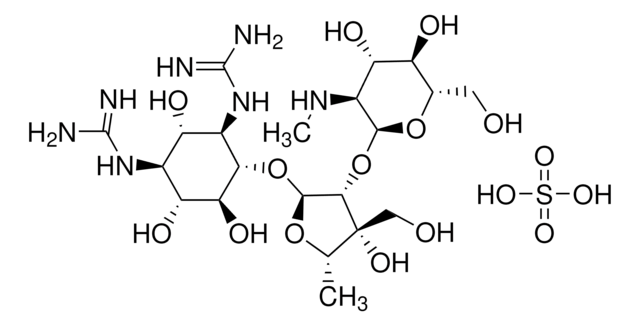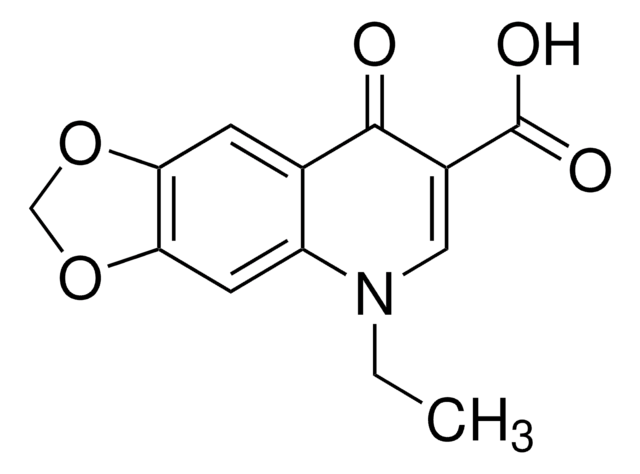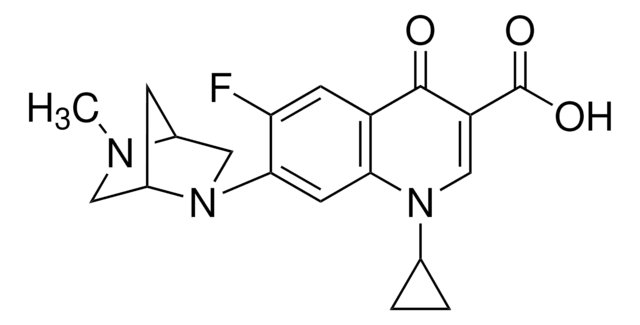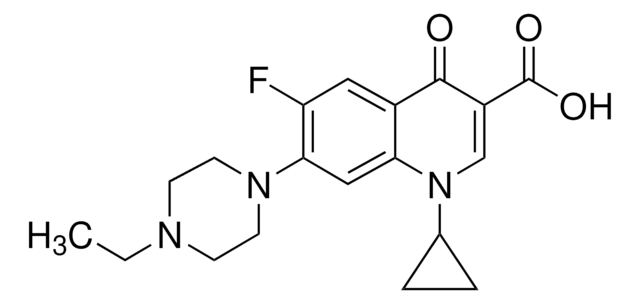L2906
Lomefloxacin hydrochloride
Sinônimo(s):
1-Ethyl-6,8-difluoro-1,4-dihydro-7-(3-methyl-1-piperazinyl)-4-oxo-3-quinolinecarboxylic acid
About This Item
Produtos recomendados
fonte biológica
synthetic
cor
white to off-white
espectro de atividade do antibiótico
Gram-negative bacteria
Gram-positive bacteria
Modo de ação
DNA synthesis | interferes
enzyme | inhibits
temperatura de armazenamento
−20°C
cadeia de caracteres SMILES
Cl.CCN1C=C(C(O)=O)C(=O)c2cc(F)c(N3CCNC(C)C3)c(F)c12
InChI
1S/C17H19F2N3O3.ClH/c1-3-21-8-11(17(24)25)16(23)10-6-12(18)15(13(19)14(10)21)22-5-4-20-9(2)7-22;/h6,8-9,20H,3-5,7H2,1-2H3,(H,24,25);1H
chave InChI
KXEBLAPZMOQCKO-UHFFFAOYSA-N
Descrição geral
Aplicação
Ações bioquímicas/fisiológicas
Certificados de análise (COA)
Busque Certificados de análise (COA) digitando o Número do Lote do produto. Os números de lote e remessa podem ser encontrados no rótulo de um produto após a palavra “Lot” ou “Batch”.
Já possui este produto?
Encontre a documentação dos produtos que você adquiriu recentemente na biblioteca de documentos.
Os clientes também visualizaram
Nossa equipe de cientistas tem experiência em todas as áreas de pesquisa, incluindo Life Sciences, ciência de materiais, síntese química, cromatografia, química analítica e muitas outras.
Entre em contato com a assistência técnica